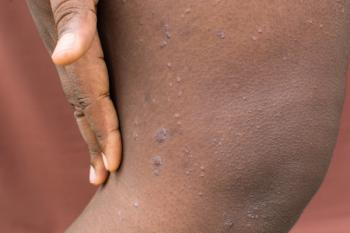
MRD: A Game Changer in Multiple Myeloma
In part 2 of our interview with Surbhi Sidana, MD, MBBS, American Society of Hematology and Stanford University, she delves into one of the hottest topics in the hematologic malignancy space today: minimal residual disease (MRD) status.
In part 2 of our interview with Surbhi Sidana, MD, MBBS, vice chair of the American Society of Hematology’s Committee on Communications and associate professor of medicine and director of the Myeloma Disease Focused Group at Stanford University, she delves into one of the hottest topics in the hematologic malignancy space today: minimal residual disease status.
Here she explains just what are these remnants of cancer that remain after completion of treatment and their significance to future treatment decisions and outcomes.
Also make sure to check our
This transcript has been lightly edited.
Transcript
What is the role of MRD status in multiple myeloma and how does it direct treatment decisions and outcomes?
Minimal residual disease is a sensitive way to measure disease that our current criteria cannot measure through blood-based testing or bone marrow–based testing.
Historically, we evaluated myeloma through monoclonal proteins or free light chains in the blood and urine and percentage of plasma cells in the bone marrow. But this is like the iceberg: you can detect something on the surface, then you do a bone marrow [test and] you can detect something under the surface. But we know that even with those techniques, a lot of disease was left behind that they were just not sensitive enough to detect. So, MRD, or minimal residual disease, testing is just a more sensitive technique to detect disease that cannot be detected by conventional technologies.
There's a couple of ways to do it by our current methodologies. Both of them right now rely on bone marrow testing: next-generation flow cytometry, which is an advanced flow cytometry to [provide a] more sensitive way of detection, or next-generation sequencing that detects the clone in myeloma at the time of diagnosis or relapse and tracks that clone through sequencing of the VDJ region in the plasma cell and just tracks that one clone to detect it at a very low level.
It's just a sensitive way to detect disease that we couldn't previously detect. And what this tells us is that if you have low-level disease that we cannot detect by MRD—it doesn't mean there's no disease, just that these techniques cannot detect—those patients do better. We've seen that historically.
Now, the FDA ODAC [Oncologic Drugs Advisory Committee] came out
We just had the IMS 2024 meeting in Brazil, and there they presented another clinical trial, which was very similar, just used a different anti-CD38,
Newsletter
Stay ahead of policy, cost, and value—subscribe to AJMC for expert insights at the intersection of clinical care and health economics.







































